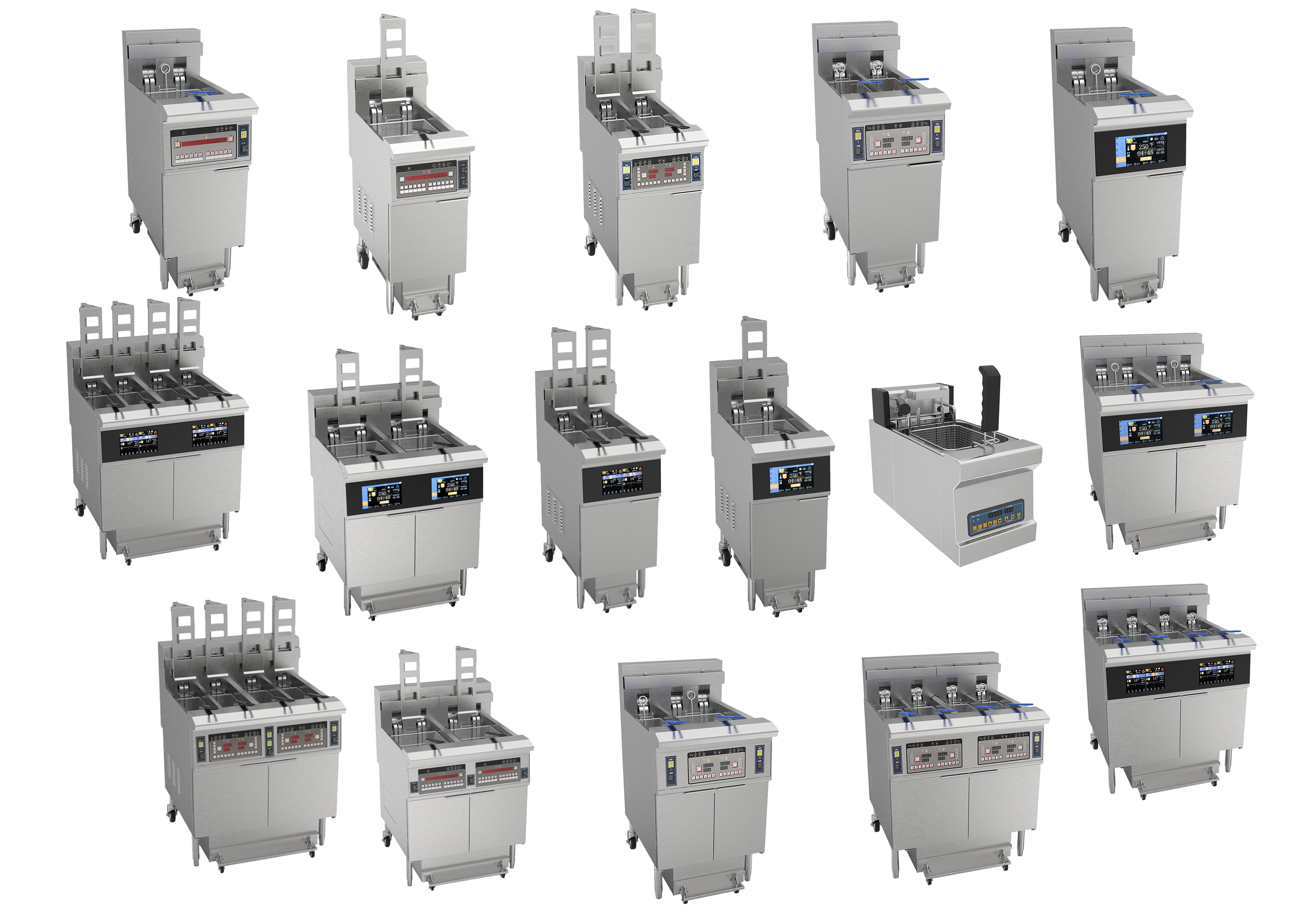Choosing the best commercial fryer for your business is a crucial decision that can impact your kitchen's efficiency, food quality, and overall customer satisfaction. The right fryer will depend on several factors, including your menu, kitchen space, volume of food production, budget, and energy efficiency goals. Here’s a comprehensive guide to help you determine which commercial fryer is best suited for your needs.
Types of Commercial Fryers
Countertop Fryers:
Best For: Small kitchens, low to medium volume.
Advantages: Space-saving, affordable, easy to move and store.
Disadvantages: Limited capacity, may not be suitable for high-volume operations.
Floor Fryers:
Best For: High-volume operations, larger kitchens.
Advantages: Larger capacity, more durable, often includes multiple vats.
Disadvantages: Takes up more space, higher initial investment.
Tube-Type Fryers:
Best For: Foods that produce a lot of sediment (e.g., breaded items).
Advantages: Tubes inside the fry pot provide even heating, sediment zone allows debris to settle away from the heating area.
Disadvantages: Harder to clean compared to open-pot fryers.
Open Fryers:
Best For: High-sediment foods like French fries.
Advantages: Easier to clean, fewer obstructions inside the fry pot. At MJG, We can also customize the automatic lifting basket.
Disadvantages: Less efficient heating for certain types of food.
Flat-Bottom Fryers:
Best For: Delicate items like tempura, tortilla chips.
Advantages: Minimal movement of oil, which is gentle on delicate foods.
Disadvantages: Not ideal for high-sediment foods.
Fuel Type
Electric Fryers:
Advantages: Easy to install (just need a power source), often more energy-efficient, precise temperature control.
Disadvantages: Higher operational costs in areas with expensive electricity rates.
Gas Fryers(Nature gas or LPG):
Advantages: Generally heat up faster, cheaper to operate in areas with low gas prices, often better for high-volume frying.
Disadvantages: Requires gas line installation, can be less energy-efficient than electric fryers.
Key Features to Consider
Capacity:
Determine your volume of frying needs. Fryers come in various sizes, measured by the pounds of food they can fry per hour or the amount of oil they hold.
For Example: A small cafe might need a fryer with a 8-16L oil capacity, whereas a busy fast-food restaurant might require a fryer with a 25-75L oil capacity or multiple fryers. MJG has multiple styles of open fryer. Single tank(25L or 26L), two tanks(13L+13L and 26L+26L), Three tanks(13L+13L+26L and 25L+25L+25L), four tanks (13L+13L+13L+13L)
Recovery Time:
This is the time it takes for the fryer to return to the optimal frying temperature after adding food.
Short recovery times are crucial for high-volume kitchens to maintain food quality and reduce wait times. The MJG's new style Open Fryer uses the latest flat heating tube, heating faster. It only takes 4 minutes to fry a pot of French fries.
Energy Efficiency:
Look for Energy Star-rated fryers, which can save on energy costs in the long run.
Energy-efficient fryers often have better insulation, advanced burners, and more precise controls.
Oil Filtration Systems:
Integrated oil filtration systems extend the life of your oil, improve food quality, and reduce costs. All of MJG fryer are built-in filtration.
Regular filtration is essential for maintaining consistent food flavor and reducing waste.
Ease of Cleaning:
Choose fryers with features that make cleaning easier, such as removable parts, removable heating tube, accessible drains, and smooth surfaces.
A well-maintained fryer lasts longer and operates more efficiently.
Budget Considerations
Only high quality machines are the real cost-saving money. Ther is an old saying in China: you get what you pat for. Our prices reflect our commitment to product quality and customer satisfaction.
Initial Cost: While it might be tempting to go for the cheapest option, consider the total cost of ownership, including energy usage, maintenance, and potential downtime.
Operational Costs: Gas fryers might have lower operating costs depending on local utility prices.
Maintenance: Regular maintenance is necessary for all fryers, but some types might require more frequent servicing.
Additional Tips
Space Constraints: Measure your kitchen space carefully and ensure the fryer you choose fits without compromising other equipment or workflow.
Menu Focus: Consider what foods you’ll be frying most often. Different fryers are better suited for certain types of food.
Future Expansion: If you plan to expand your menu or increase volume, consider investing in a larger fryer or multiple units.
To sum up, Selecting the best commercial fryer for your business involves balancing several factors, including type, fuel source, capacity, energy efficiency, and budget. By carefully evaluating your specific needs and understanding the advantages and disadvantages of each option, you can make an informed decision that enhances your kitchen's productivity and helps you deliver consistently high-quality food to your customers.

Post time: Aug-08-2024

